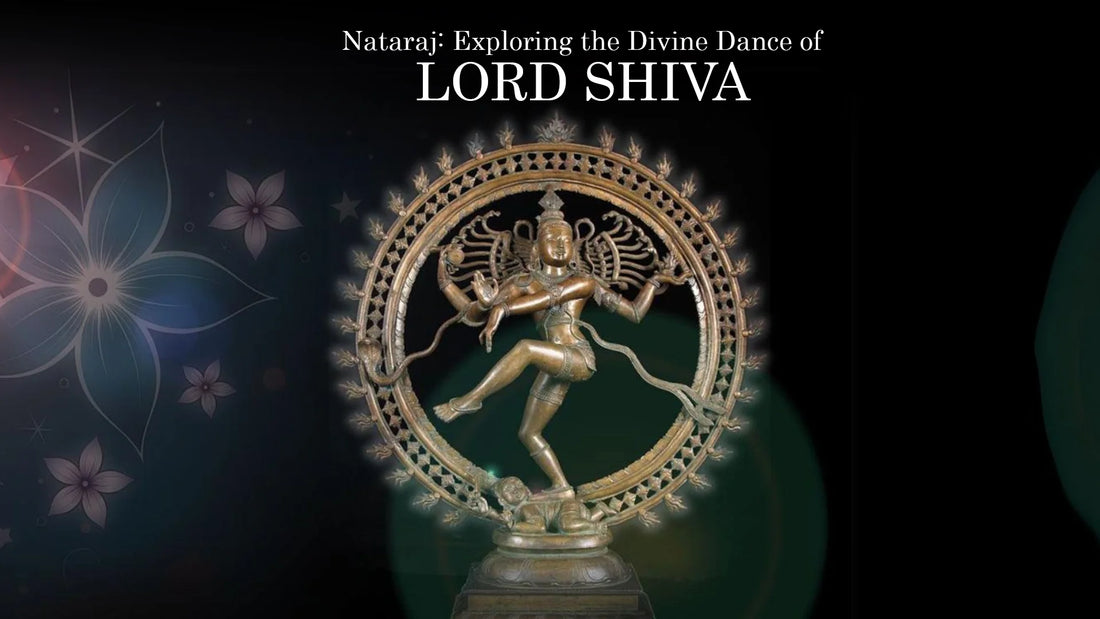Ever seen a brass statue of a man dancing in fire? That's Nataraj! It shows Lord Shiva, a super important god in Hinduism. The brass Nataraj statue is like a special symbol, often made from shiny brass. This article will tell you all about why the Nataraj pose is so cool and why brass statues of him are awesome. We will talk about what the dance means, how they are made, and why people love brass Natraj so much.
Lord Shiva, the Destroyer and the Dancer
In Hinduism, Lord Shiva plays a vital role. He's known as "the Destroyer" – the one who tears down what's old and worn out to make way for new beginnings. But Shiva is also much more than that. He's seen as the source of all creation, the power behind change and transformation. And then there's his surprising side – Shiva, the cosmic dancer!
The Meaning Behind the Nataraj Dance
The Nataraj statue portrays Shiva in a specific dance posture, each element brimming with symbolism. Imagine this: Shiva stands gracefully, one leg raised high. He's surrounded by a ring of flames, symbolizing the endless cycle of creation and destruction in the universe. In his hands, he holds a drum (Damaru) that beats the rhythm of creation. Another hand holds a flame, representing the burning away of ignorance. One hand is raised in a gesture of blessing and fearlessness, while the other points to his raised foot, signifying the need to surrender to the divine dance of life.
Brass: The Perfect Choice for the Divine Dance
Brass has been used for ages by Indian artists to create beautiful Nataraj statues. A unique metal alloy composed of copper and zinc is called brass. Because of its strength and ease of handling, sculptors are able to depict the minute nuances of the Nataraj stance. These statues will last for centuries because brass doesn't corrode readily. Furthermore, a lot of followers may afford these exquisite representations of Shiva because brass is sometimes less expensive than other metals.
The Art of Creating a Brass Nataraj
Creating a brass Nataraj statue is a true art form. The traditional method involves a technique called "lost-wax casting." This is a short explanation: Initially, a meticulous wax replica of the Nataraj is fashioned. The wax is then surrounded with clay to form a mold. The wax is melted away when the clay solidifies, leaving a hollow in the statue's form. After that, the wax-filled cavity in the mold is filled with hot, molten brass. The clay mold is removed once it has cooled, showing the freshly made brass Nataraj. The final step involves meticulous polishing and finishing touches, bringing the statue to life.
The Many Faces of Brass Nataraj
Brass Nataraj murti come in all shapes and sizes. Some are small and portable, perfect for placing on a home altar. Others are grand and majestic, meant to be displayed in temples or museums. The style and finish of the statues can also vary. Some have a polished, golden shine, while others have a darker, more antique look. Each statue is unique, reflecting the skill and artistic vision of the craftsperson who created it.
More Than Just a Statue: The Significance of Brass Nataraj
For Hindus, brass Nataraj statues have great religious significance in addition to being exquisite pieces of art. Shiva's grace and strength are powerfully brought to mind by these statues. They are used by devotees in their worship ceremonies in an attempt to obtain Shiva's blessings for a creative, transformative, and ignorance-free existence. In addition to providing solace, the Nataraj dance serves as a reminder that change is an inevitable aspect of life and death.
A Timeless Legacy: The Enduring Appeal of Brass Nataraj Statues
For generations, brass Nataraj statues captured people's hearts and thoughts. They are an exceptional fusion of religion, creative talent, and deep symbolism. Whether they are on display in a temple of worship or are just beautiful in a museum, these statues never fail to inspire. A powerful symbol of the divine's enduring presence in the earth, the relationship between creation and destruction, and the never-ending dance of life is the picture of Shiva dancing.
Frequently Asked Questions
Why did Shiva become Nataraja?
Shiva became Nataraja to show the rhythm and energy that keeps the universe going. It is like a giant dance that creates everything around us. Moreover, Shiva's dance is about getting rid of old things that don't work anymore, kind of like cleaning your room. This makes space for new and better things to come!
Why does NASA keep a Nataraja statue?
It is believed that the Nataraja dance shows the balance and energy of the universe. Maybe NASA keeps a statue because they study space and want to understand this balance better!
Can we keep a brass Nataraja statue at home?
Yes, you can! Many Hindus keep Nataraja statues at home as a reminder of Shiva and his power.
Where should I keep a Nataraja idol at home?
If you do get a Nataraja statue, it is good to keep it in a clean and respectful place. The most important thing is that you feel comfortable and happy where you put it.
You May Also Like -




